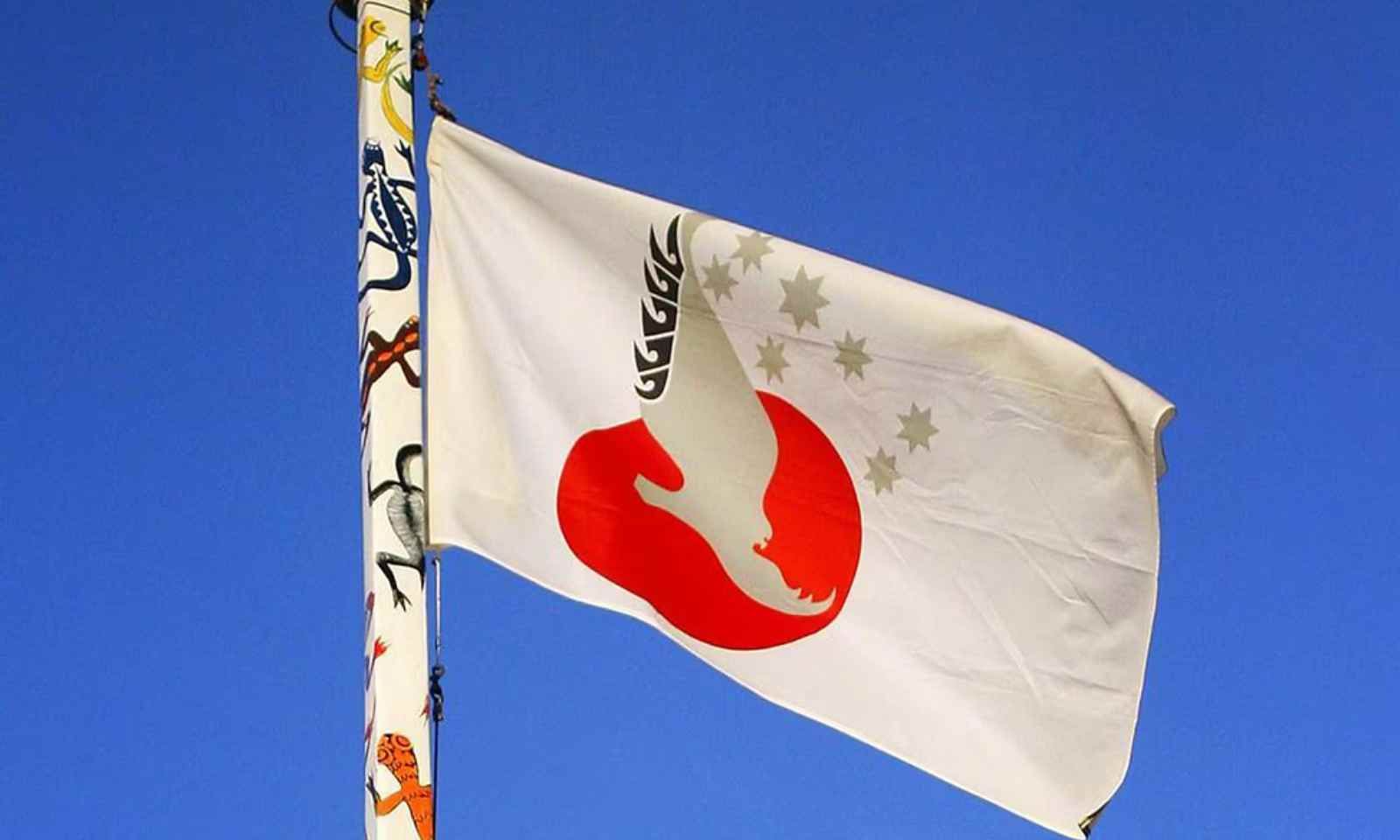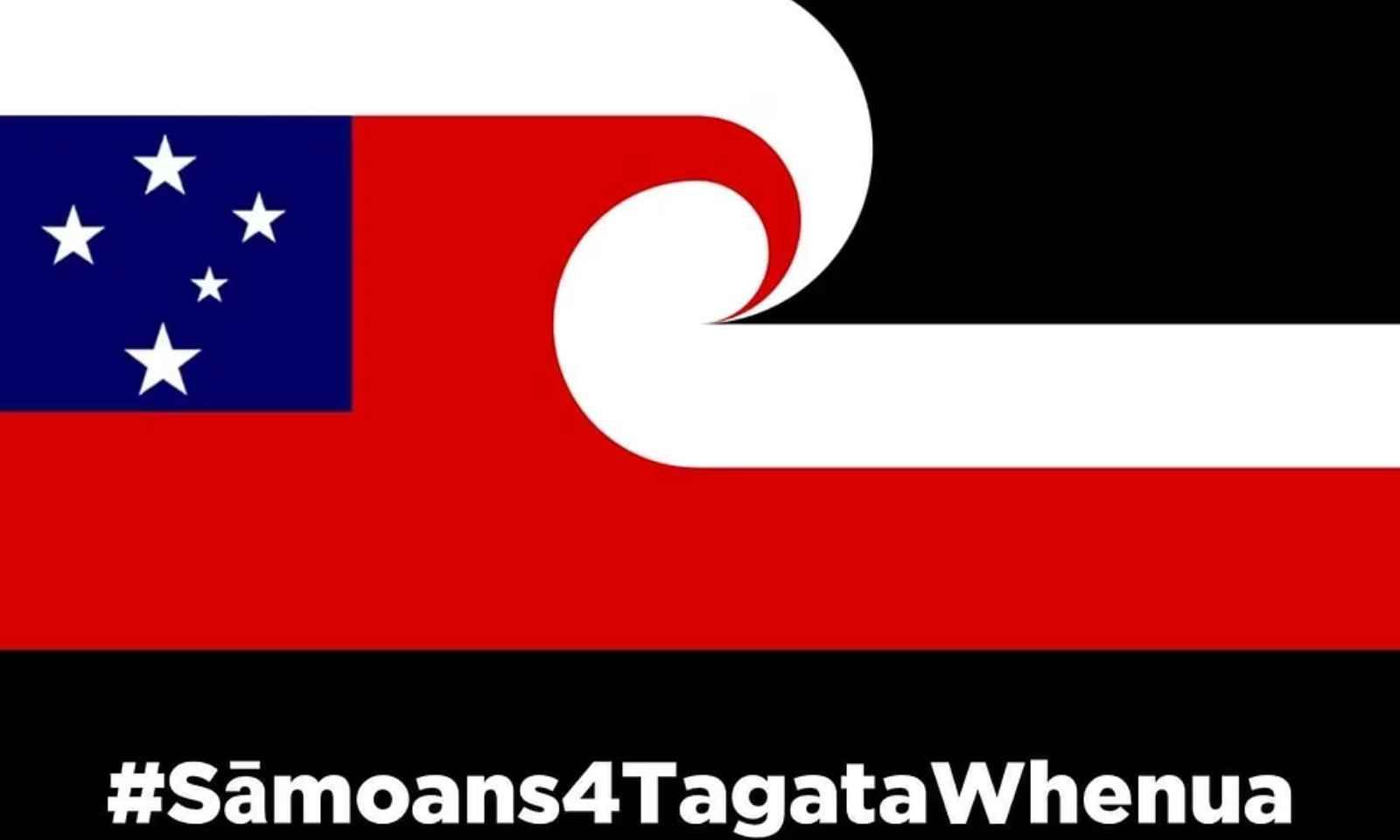

The Tino Rangatiratanga flag flies during a hīkoi.
Photo/ Supplied
Te Tiriti: Flags will be flying high at the Waitangi, but what do they represent?
Flags will be flying high at Waitangi, and many people will be wondering what they all stand for.



‘There wasn’t a negotiation’: PM on Manawanui payment


From adversity to ancestry: Pacific wayfinding through a neurodiverse lens


'Asking for help is not a weakness': Tongan researcher on mental health awareness

‘There wasn’t a negotiation’: PM on Manawanui payment


From adversity to ancestry: Pacific wayfinding through a neurodiverse lens
Māori have used flags in many social settings, including tribal, political, and religious arenas.
But what do all these different flags mean and stand for?
To many non-Māori, the flags have become a symbol of Māori anger and protest.
Linda Munn, of Mount Maunganui, the last surviving designer of the Tino Rangatiratanga flag, said all flags have a historical meaning behind them.
“It is due to the history of Aotearoa, from when settlers arrived through the signing of the Tiriti, that we have all these significant flags; they don’t mean harm, but peace.
“Some flags were created because we needed a flag, and like many other countries, they would have had the same processes where they needed a flag.”

New Zealand's first flag, Te Kara.
UNITED TRIBES FLAG
In 1830 New Zealand’s first flag was created because New Zealand-built ships were not permitted to sail under the British flag.
New Zealand was not yet a British colony at the time and landing in Australia without a register violated British navigation laws.
And so, when James Busby, the official British Resident, arrived in New Zealand in 1833, he was made aware of the problems New Zealand’s flagless state caused.
Busby believed a New Zealand flag would unite Māori and encourage collective government; and the United Tribes flag was created.
After becoming the British Resident of New Zealand in 1833, Busby wrote to the colonial secretary asking them to design a flag.
Busby rejected the initial design as it lacked red, a symbol of Māori rank.
In 1834, Ngāpuhi chiefs saw the flags and chose one already used by the chiefs’ missionary society.
A New Zealand flag featuring a white background, four horizontal blue stripes, and the Union Jack in the upper left corner was commissioned by the governor of New South Wales in late 1833.
But it too was deemed inappropriate by Busby, due to its insufficient inclusion of red.
He asked missionary Henry Williams to design a flag which then came about the Union Jack flag.
THE UNION JACK
Williams submitted three options, which were considered by a gathering of chiefs at Waitangi on March 20, 1834.
The flag chosen was one used by the Church Missionary Society, and it was declared to be the flag of New Zealand that day.
With the signing of the Treaty of Waitangi on February 6, 1840, the United Tribes flag was supplanted by the Union Jack, the flag of Great Britain, as the officially acknowledged flag of New Zealand.
Some Māori continued to employ the flag of the United Tribes; it was flown by Ngāi Tahu chief Tūhawaiki from Ruapuke Island, southeast of Bluff, until his demise in 1844.
During the early 2000s, the United Tribes flag continued to symbolise mana, especially in Northland.
In 1844-45, Ngāpuhi chief Hōne Heke cut down the British flagstaff at Kororāreka (later Russell) four times, objecting to its flying.
He argued that the management of the land should be shared with Māori rather than solely held by the government, as the British flag suggested.
According to Ngāpuhi chief Te Ruki Kawiti, he would rather die than allow the British flag to fly above Kororareka, as he believed it undermined the authority of his chiefs and all his lands.
In 1863, Māori cut down the flagstaff at Manukau Heads and destroyed multiple boats. Kina Ohina Muri was charged with stealing flags after a government survey in Akaaka, south of Auckland, in 1892.
In the 1860s at this time, various Māori independence movements emerged, each with unique symbols of identity.
Among these developments was the Kīngitanga (Māori King movement).
Upon the anointment of Pōtatau Te Wherowhero as king in 1858, three flags were flown with the words Kīngi (king) and Niu Tireni (New Zealand).

The kingitanga flag. Photo / Sarah Ivey
After Tāwhiao succeeded Pōtatau, a blue and yellow flag with three star-like figures was designed to represent New Zealand’s three islands.
The white flag featured the Tainui waka (canoe), rainbow god Uenuku, Matariki (the Pleiades constellation), a cross, a crescent moon, and the sun.
In the 21st century, the Kīngitanga flag is still used at poukai (annual visits to marae) and koroneihana (coronation) celebrations.
KOTAHITANGA FLAG
In 1893, the Kotahitanga, or Māori parliament, held its first session at Waipatu marae in Hastings.
A flag with the North and South Islands and a Māori figure on each island was flown, representing Māui, the demi-god who fished up the North Island.

The Tino Rangatiratanga flag is controversial among Maori. Photo / Dean Purcell
TINO RANGATIRATANGA FLAG
On Waitangi Day in January 2009, Minister of Māori Affairs Pita Sharples publicly requested a Māori flag fly from the Auckland Harbour Bridge.
He believed displaying a Māori flag at national sites would improve Crown-Māori relations.
Then-Prime Minister John Key said he would fly the two flags together if a flag was agreed upon.
More than 1200 submissions were received, with 79 per cent identifying as Māori.
In the submissions, 80.1 per cent favoured the Tino Rangatiratanga flag as the preferred national Māori flag.
Feedback also suggested flying the flag on Waitangi Day and other important occasions.
The Tino Rangatiratanga flag was recognised as the preferred national Māori flag by Cabinet on December 14, 2009, complementing the New Zealand flag.
Munn says the flags give us a sense of pride and identity.
“The flags being waved this Waitangi don’t mean any harm; we protest in peace.
“It is about reclaiming space, and if you don’t like it, then move on.
“This is our whenua.”
WHITE FLAG
Tame Iti is a Tuhoe and is known for his mahi on many fronts including being an artist, an activist and an author.
This Waitangi Day will begin with a hīkoi on Monday at 7.30am from Te Tii Waitangi marae north of Paihia, where he has invited all Māori, Pākehā, and Tangata Tiriti to join him and bring a blank white canvas as a flag.
The blank white canvas represents history, from Tane’s birth and separation from his parents to the creation of a new space.
The blank white canvas allows individuals to paint a new space and tell a new story.
“A blank canvas, a new story, tangata whenua, tangata Tiriti, together united, spark your flag,” Tame Iti says.

Flag created by The Bloody Samoan - The Art of Michel Mulipola.
The Tino Rangatiratanga flag will be embellished with a Samoan artistic interpretation, which will serve as a symbol of solidarity and unity with the tangata whenua during the Waitangi Festival, according to Samoan artist Mulipola, also known as the bloody Samoan.